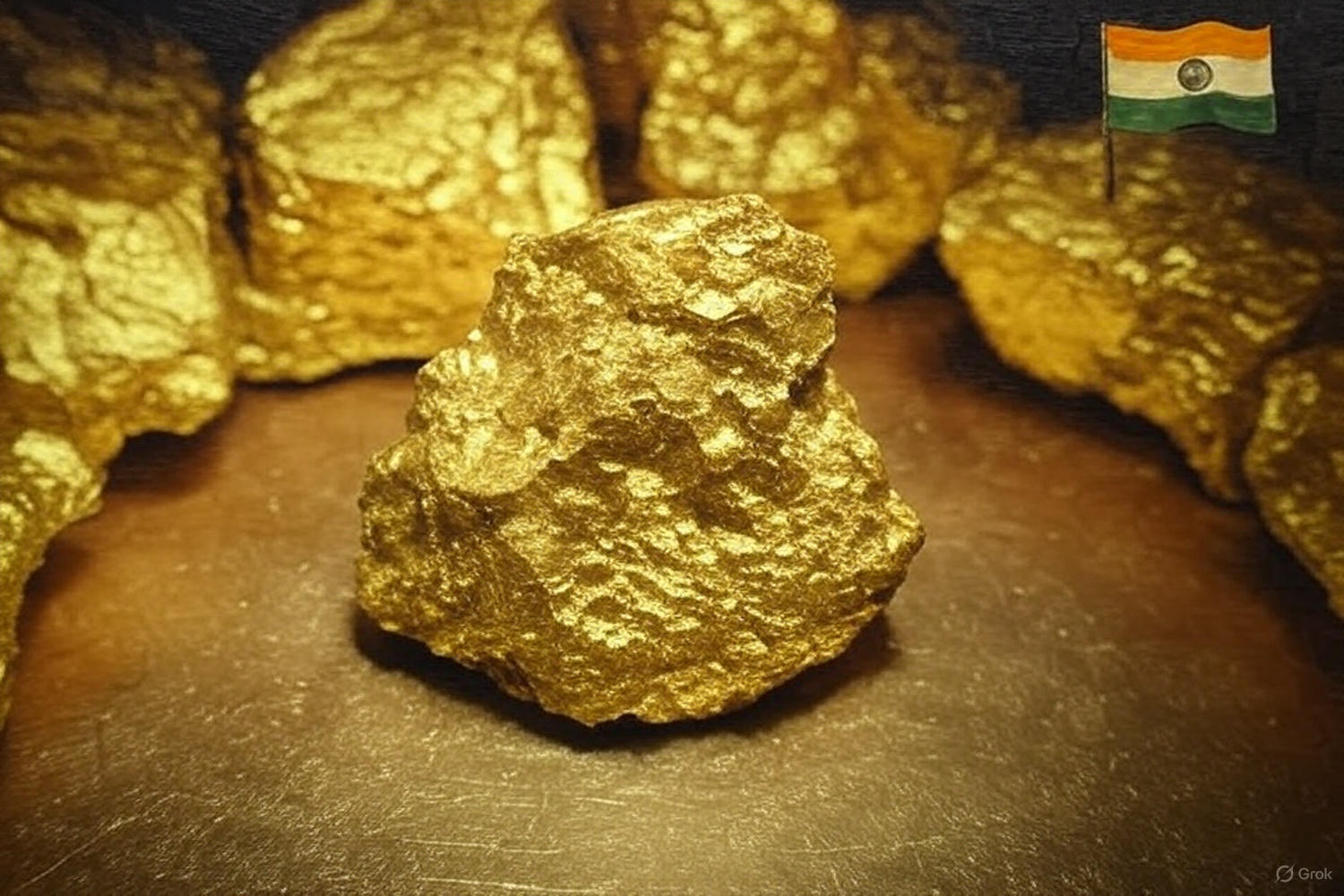Massive Gold Discovery Near Jabalpur [7 Key Facts to Know]
Introduction
A recent announcement by the Geological Survey of India (GSI) has set off waves of excitement and debate across the country. According to a viral post by @TimesAlgebraIND on October 2, 2025, the GSI has reportedly identified millions of tonnes of gold spread over 100 hectares near Jabalpur, Madhya Pradesh.
If this discovery proves commercially viable, it could transform India’s gold sector, reduce dependence on imports, and reshape the nation’s economic landscape.
BIG NEWS 🚨 GSI confirms millions of tonnes of gold buried across 100 hectares near Jabalpur, MP. pic.twitter.com/w42Evg4Vzx
— Times Algebra (@TimesAlgebraIND) October 2, 2025
1. The Tweet That Sparked the Buzz
The original tweet by @TimesAlgebraIND stated:
“BIG NEWS 🚨 GSI confirms millions of tonnes of gold buried across 100 hectares near Jabalpur, MP.”
- Date & Time: October 2, 2025 – 15:56 UTC (9:26 PM IST)
- Visuals: An image of a rugged cave glowing with golden hues and piles of nuggets
- Source Link: Provided in the tweet but not publicly accessible at the time of writing
The dramatic imagery helped the post go viral on X (formerly Twitter), drawing national and global attention.
2. Geological Context of Jabalpur
Jabalpur and nearby regions like Sihora tehsil’s Mahangwa Kewalri area have long been known for their mineral-rich terrain, including deposits of iron ore and manganese. Geological experts believe the area’s rock formations make it plausible for significant gold reserves to exist.
However, the scale claimed in the tweet — “millions of tonnes” — is extraordinary, raising questions about the accuracy of the estimate.
3. Why This Discovery Matters
- India’s Gold Demand: India imports 700–800 tonnes of gold annually, creating a heavy burden on foreign exchange.
- Reserve Bank Strategy: The RBI has been increasing its gold holdings to hedge against economic uncertainty.
- Economic Potential: If even a fraction of the reported deposit is recoverable, it could bolster domestic supply and reduce import dependence.
Such a discovery could also position India as a major global gold producer, a title currently dominated by countries like China and Australia.
4. Reactions on Social Media
The viral post triggered diverse reactions:
- Optimism: Some users celebrated the news, calling it a “historic opportunity for India’s economy.”
- Skepticism: Others warned that previous announcements — such as lithium finds in Jammu — had yet to translate into meaningful production.
- Environmental Concerns: Activists highlighted the potential for deforestation, wildlife disruption, and displacement of local communities.
- Conspiracy Theories: A few speculated that such discoveries were being highlighted for political or election-related motives.
5. Challenges and Feasibility
Extracting gold from the earth is far from simple. Key hurdles include:
- Depth & Ore Quality: Viability depends on how concentrated and accessible the gold is.
- Infrastructure Needs: Large-scale mining requires roads, power, water, and skilled manpower.
- Environmental Safeguards: Mining projects must pass strict impact assessments to avoid long-term ecological damage.
- Community Consent: Displacement and land rights remain sensitive issues in mineral-rich regions.
6. Economic & Strategic Implications
If the claim is validated:
- Boost to State Revenue: Madhya Pradesh could see significant economic benefits through royalties and taxes.
- Job Creation: Mining and related industries would bring employment to the region.
- Geopolitical Impact: India’s improved gold reserves could enhance its financial resilience and bargaining power in global markets.
But over-exploitation without sustainable practices could harm both the environment and local communities.
7. The Road Ahead
As of now, the discovery is in the early verification stage. Detailed surveys, feasibility studies, and environmental assessments will take time. Only after these steps will commercial mining be approved.
Meanwhile, the image of a gold-laden cave remains a powerful symbol of both promise and uncertainty — fueling speculation about what lies beneath Madhya Pradesh’s soil.
FAQs
1. Is the discovery officially confirmed?
The GSI’s involvement adds credibility, but full confirmation requires detailed geological and economic surveys.
2. How much gold could actually be mined?
The “millions of tonnes” figure is preliminary and may not reflect extractable quantities.
3. When will mining begin?
It could take 5–10 years before large-scale extraction starts, depending on feasibility and environmental clearances.
4. How could this affect India’s economy?
A viable domestic supply would reduce gold imports, strengthen the rupee, and create jobs in mining and refining sectors.
5. What are the environmental risks?
Deforestation, soil erosion, water contamination, and loss of biodiversity are key concerns that must be addressed.
Conclusion
The Jabalpur gold discovery represents a fascinating mix of economic promise and practical challenges. It has already ignited national conversations about resource management, sustainable development, and the future of India’s mining sector.
Whether this becomes a transformative milestone or remains a tantalizing prospect will depend on science, policy, and collective will.
Opinion
Resource discoveries often arrive with a mix of hope and caution. On one hand, a significant domestic gold reserve could reduce India’s dependence on volatile imports, strengthen its currency, and open avenues for regional development.
On the other, history shows that resource booms can be double-edged swords. Mismanagement, environmental degradation, and social displacement can turn potential blessings into long-term liabilities.
For India, which aspires to balance economic growth with sustainability, the Jabalpur find is not merely a story about gold — it is a test of how a democracy leverages natural wealth without compromising ecological integrity or social justice.
As the debate unfolds, citizens, policymakers, and global markets alike will watch closely. The discovery forces us to ask deeper questions:
- Should nations accelerate mining to fuel economic growth, or preserve resources for future generations?
- How do we balance short-term gains against irreversible ecological costs?
- Can India pioneer a model of ethical, sustainable mining that others might follow?
Ultimately, the value of the gold beneath Jabalpur will depend not just on its quantity, but on the wisdom with which it is managed.


0 comments